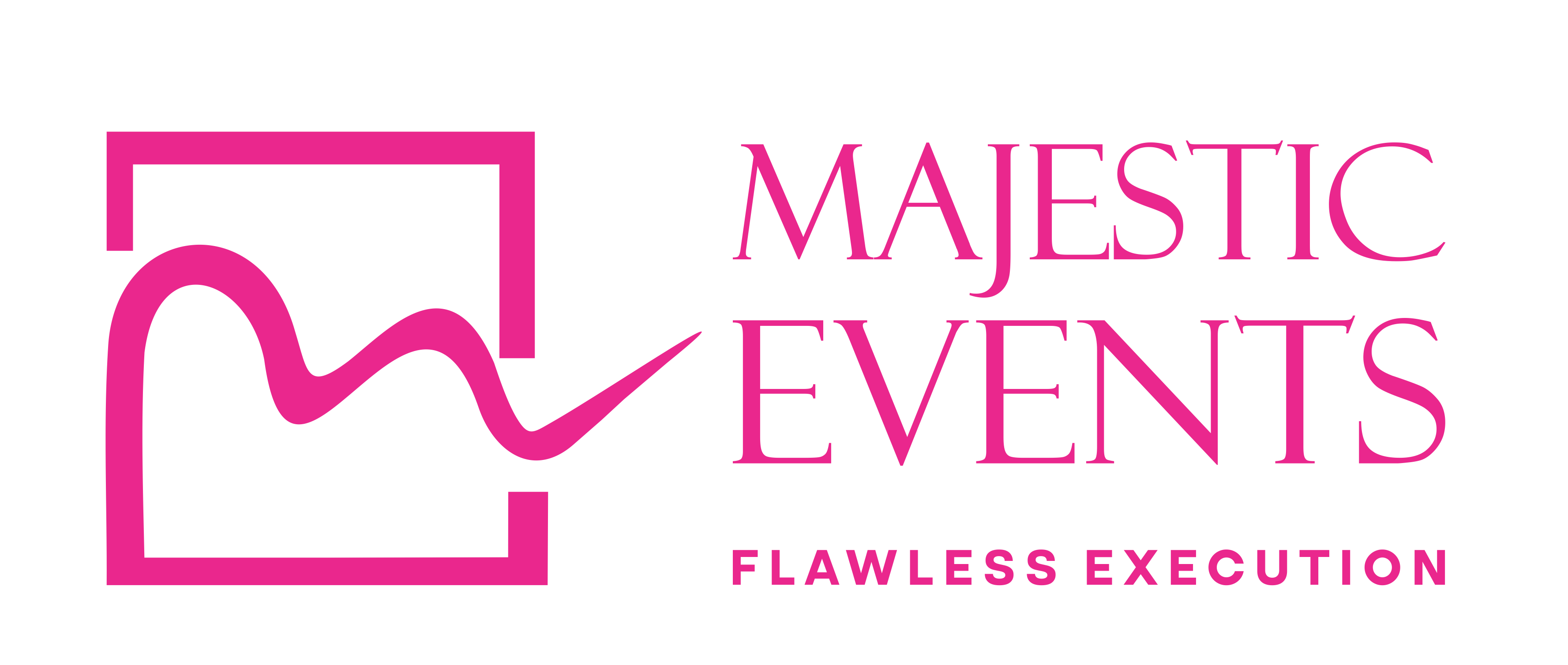
Majestic Events is no stranger to Marketing. As a matter of fact, we offer Marketing Consulting and Strategy services as well as Events Marketing services. Both ensure that we have listened to your challenges, needs, or wants and then together, determine the right direction for your brand or company. All this with the goal to create and cultivate great connections.
“This doesn’t seem so hard”, “I can do it myself”. Have the same thoughts crossed your mind? If so, you are not alone. Businesses, especially small businesses, have their own simple definition of what Marketing is and what it encompasses. So what is Marketing?
Definition of Marketing
Marketing is any action that you take (whether as a company, an entrepreneur, or at any level of business) to attract an audience to your products or services. This is usually done through high-quality messaging to ensure that your customers receive the information they require. The aim is to deliver value for your customers or prospects through the content you share. The long-term objectives are to increase product/service value, strengthen brand loyalty, and increase sales.
Marketing Vs Sales Vs Advertising
Often, many people confuse Marketing, Sales, and Advertising. They either think all three are synonymous or they just need one. The three are related, yet they are distinct concepts. We have defined marketing above, but let’s explain the three together:
- Marketing: This is a strategy that connects buyers with a product or service.
- Advertising: This is a tactic of marketing that communicates a message to the market.
- Sales: This is a tactic of marketing that involves selling the product or service to a customer.
Let’s see if we can simplify this in 3 easy steps:
- I need to know how best to reach my customers.
- I need to communicate with them about my products and services.
- I need to convince, win, and bring them in.
The Right Questions – How To Reach My Customers
There are some questions you need to answer in order to be effective in your marketing. You need to research and analyze your consumers to determine the best way to reach them. You can do this by using a Buyer Persona. This is a detailed description of someone who represents a target audience. It keeps the business focused on addressing customer priorities.
You can ask the right questions in 3 steps:
- What am I selling?
- Using the Buyer Persona, ask yourself:
- Who are my customers?
- What is their demographic?
- What is their professional position or their career?
- What is their educational background?
- Where else might they be found?
- What is their lifestyle?
- What brands do they follow or like?
- What do they want? What are their pain points that might be solved by my product or service?
- What are their objections? What keeps them from coming to you?
- Using the Marketing-Sales-Advertising concept:
- Where, when, and how can I then communicate with them or reach them?
The Personality of Marketing
Let’s then see what Marketing is really about. Have you ever had any of these thoughts?
- Social Media Marketing: “I need to be on Instagram, Facebook, X, LinkedIn, and even Snapchat for marketing purposes”. Don’t stress your marketing team. Who are your customers? What are you selling? Once you answer these questions, you can then determine the most effective platform to reach them. Snapchat is probably not the best platform to sell Marketing Consulting services.
- Traditional Marketing: “Nobody reads newspapers anymore”. You’d be surprised to notice that some people still believe in traditional marketing. Print media, direct mail, TV commercials, and Radio – these methods can reach a broad customer base that you never thought to consider. Don’t knock it till you’ve tried it. But make sure it applies to your goals and what you sell.
- Promotion: “If just one person promotes my business, that’s enough marketing for me”. Promotion refers to how messages are communicated to customers to generate awareness, interest, desire, or action. Yes, it is important, but do not neglect other marketing actions such as product development, market research, and customer service. Change that “one person” to “many people”.
- Selling: “Marketing is just all about selling”. You’re not wrong, but selling is only one aspect of marketing. While you are selling, do not forget to build relationships with your customers. Customer service plays an important role here as well, and you can read more in our previous blogs about Customer Experience and Customer Service.
- Creativity: “I need a thousand creative ideas to succeed in marketing”. Creativity is crucial, but do not overwork yourself thinking of too many ideas. Not all may work with your brand. Whatever ideas you come up with, ensure that you can execute them and track their results. Bad execution can cost you, but well-executed ideas will give you a competitive edge.
- Awareness: “If people know me, then I’ll be set”. You’re not wrong – Awareness is important, but can you keep people locked in on your brand? How can you turn prospects into customers? How can you create interest using your content to keep your customers coming back?
- Quick Sale: “I just need to make a quick sale”. Marketing is never short-term. Marketing builds relationships, and your focus should be to ensure that with your marketing efforts, your customers are aware of and will always choose to come back to your product or service.
- Expensive: “There is no such thing as low-cost marketing. I need a huge budget”. Just as you may not need to use all the Social Media platforms, you may also not need to use all the other marketing strategies. You may not need a billboard to advertise your Events Marketing services. There are plenty of cost-effective strategies like content marketing and social media marketing. Focus your efforts on the techniques that will be most effective for your business to reach your target market.
Remember:
- Narrow down what you are selling.
- Know your customers.
- Find the best way to reach your customers.
- Find the best methods to communicate to your customers about your products and services.
- Convince, win, and bring them in.




